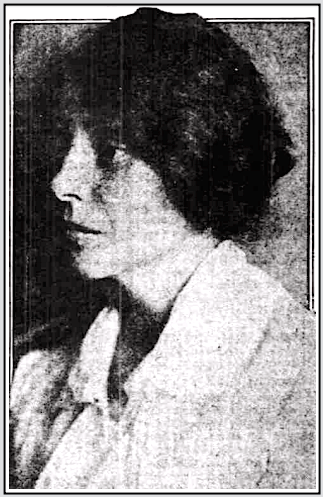 ———-
———-
Hellraisers Journal – Saturday December 20, 1919
Mary Heaton Vorse on Organizing Steel Workers in Youngstown
From the Pittsburg [Kansas] Workers Chronicle of December 19, 1919:
THEIR WEAPONS AND OURS.
—–(By Mary Heaton Vorse.)
Not long ago a friend of mine came to Pittsburgh [Pennsylvania] who wanted to know about the strike. He wanted me to tell him first of all what had impressed me most. My answer was the answer that anyone who had watched the strike must have given. What had impressed me the most was the courage of the men; what had impressed me the most was their endurance; what had impressed me most was their uncomplaining patience.
It had seemed almost a miracle to me that men of a dozen or more nationalities and half a dozen states, separated into isolated communities, should one fine day have struck altogether, 350,000 strong.
The longer I stayed and the more knew about the strike, the more in credible did the strike seem, for as I went from town to town staying a few days now in one community and now in another, I realized how little organization they had before the strike started.
Take Youngstown for instance. No one had ever organized Youngstown and everyone said that Youngstown never could be organized.
In Youngstown and East Youngstown and the nineteen small communities surrounding it where steel is made, there are about 70,000 steel workers. The first large meeting ever held of the National Committe occurred in January of this year. Between that time and September 22 there was never a larger force of organizers in this whole district than six. Six men organized Youngstown and the surrounding country. Six men and that was all.
You can imagine how much impression six so-called “outside agitators”-all A. F. of L. organizers are “outside agitators”-would have had. They would have had no effect at all if here had not been an upsurging purpose in the hearts and minds of the workers themselves. The steel workers had gotten ready for the moment of their declaration of independence. They had gotten to the moment when in their hearts they were saying “There comes a time in human events when it becomes necessary,” and what they were going to separate themselves from, was the old regime-the regime of the 12-hour day. They were through with industrial slavery which told them that they could have no organizations. It might almost have been said of them that they organized themselves. The strike was a great popular movement toward true democracy.
———-
[Photograph and emphasis added.]
~~~~~~~~~~~~~~~~~~~~~~
SOURCES
Quote MHV Immigrants Fight for Freedom, Quarry Jr p2, Nov 1, 1919
https://www.newspapers.com/image/405049859
The Workers Chronicle
(Pittsburg, Kansas)
-Dec 19, 1919
https://www.newspapers.com/image/484385714/
IMAGE
MHV, NYS p37, Dec 1, 1918
https://chroniclingamerica.loc.gov/lccn/sn83030431/1918-12-01/ed-1/seq-37/
See also:
Tag: Great Steel Strike of 1919
https://weneverforget.org/tag/great-steel-strike-of-1919/
Tag: Mary Heaton Vorse
https://weneverforget.org/tag/mary-heaton-vorse/
The Quarry Workers Journal
(Barre, Vermont)
-Dec 1, 1919
https://www.newspapers.com/image/405050320/
“Sizing the Mob on the Steel Strike”
-by Mary Heaton Vorse
Part I
Part II
Kansas Trades Unionist
(Topeka, Kansas)
-Dec 5, 1919
https://www.newspapers.com/image/519799783
https://www.newspapers.com/image/519799803/
“Many Foreign Steel Strikers Fought in World War for Freedom”
-by Mary Heaton Vorse
Part I
Part II
~~~~~~~~~~~~~~~~~~~~~~~~~~~~~~~~~~~~~~~~~~~~~
Tamo Daleko

